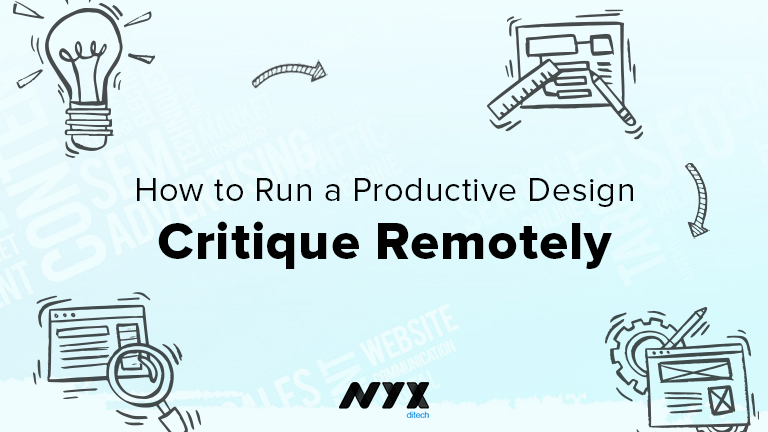How to Run a Productive Design Critique Remotely

A design critique is a process of assessing a design and providing input as to whether the work achieves its goals. Typically, a design criticism takes the form of a group discussion with the objective of enhancing a design. This does not entail merely evaluating a design.
Design critiques are classified into two types: solo critiques and design reviews. Solo critiques are meetings dedicated to the improvement of a single piece of work. On the contrary, design reviews are often assessments of a product based on a bunch of principles.
Here are the three fundamental aspects of successful design critiques:
- A defined scope for the discussion – Far too frequently, critiques become cumbersome owing to a lack of focus. Critiques will be useful only if clear limitations exist for what may and should be criticized. Once the limits have been established, the attendees, duration, and formality of the event may be defined.
- Design objectives for the job that have been agreed upon – To assess a design and determine if it achieves its objectives, clarity on the solution to a problem is required. This most likely entails a thorough grasp of users and their requirements. Without these, all input is subjective and without foundation.
- Instead of commands, use conversation – Commands, or instructions, can swiftly undermine the critique’s stated objective, which is to promote open debate in order to better the conclusion.
The Purpose of a Design Critique
Your primary design critique objectives should include the following:
- Collect specific types of input from participants about a range of alternative design ideas for a certain section or area of the product.
- Contrast the design of various elements of the same product.
- Examine the customer flow via a design by going through each stage in the order in which users would finish a job.
- Investigate the designs of competitor products or any other products that incorporate aspects or characteristics similar to those you wish to accomplish.
- Allow colleagues with varying job responsibilities to offer comments based on their areas of expertise.
Secondary objectives should usually include the following:
- Provide a framework for a project’s creative process.
- Enhance your team’s capacity to consider and discuss design concepts.
- Educate non-designers on how to apply the design critique approach to various types of problem solving scenarios.
Running a Productive Design Critique Remotely
Begin With Clarifying Doubts
Dispel any misconceptions regarding the purpose of the provided design or the type of experience it is meant to generate.
Listen Before You Speak
Often in professional situations, we mix discussions, with possibilities to impose our viewpoints on others. If you take a minute to listen and comprehend before expressing an opinion, you will be more receptive to hearing something new that may challenge your preconceived notions. Therefore, rather than waiting for others to finish, make an active effort to comprehend what is being said.
Initiate Alternate Explorations
Pose questions that bring to light additional possibilities that the designer may have overlooked. Withhold judgments unless there are apparent inconsistencies between the designer’s purpose and the designs being critiqued.
Specify Your Point
Having a personal viewpoint and sharing your own preferences is acceptable. However, this should not be confused with your perspective of what your consumers require or desire. Therefore, be sure to define the type of viewpoint you’re providing. Hopefully, there will be sufficient data and study to enable everyone to agree on the most likely consumer standpoint on various proposals.
Following these practices and applying them going with a design critique framework that works in your situation can help you optimize your design quality and output with great effect and accuracy. Contact us today to know more.

